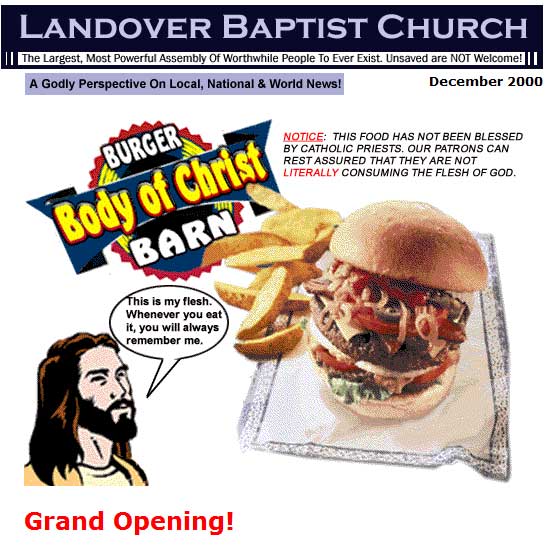It is quite probable that Jesus Christ was eaten by his followers
As we can infer from the biblical texts, the tomb where Christ’s body was stored was not guarded. True, the Gospel according to Matthew claims that in order to prevent the corpse of Jesus Christ from being stolen from the tomb, the next day after the crucifixion chief Jewish priests and Pharisees assembled in front of Pilate and asked him to post a guard to secure the tomb, and when Pilot told them, – ‘You have a guard…’ – they put (their?) guards at the tomb and sealed the stone. (Matthew, 27, 62-66)
This episode does not seem to be a testimony by some Christ’s contemporary, but it rather looks as a fake, which was grafted into the Gospel by a person who was not familiar with the Jewish religion and culture, because the events took place during the Sabbath, and any work (sealing the tomb and possibly posting the guard or even standing on guard) was then a serious crime against the Jewish religion.
Even the mother of the prophet and his (apparently) girlfriend or wife Mary Magdalene did not dare even to make preparations for the pending burial ceremony – there is little doubt that that nobody guarded the tomb until the Saturday sunset.
Even on the Sunday morning when the two Maries came to the tomb, they found only one man, who tried to convince them that Jesus Christ had resurrected (or two men according to Luke and John). So, most probably none of Christ’s enemies had guarded the tomb at all.
The owner of the tomb, Joseph from Arimathea, apparently was Christ’s disciple, so in fact the followers of the Christian prophet could have done with his corpse whatever they wanted, and they could have eaten the body as well.
If the body of Jesus Christ had actually disappeared during the cannibalistic party of his disciples, it is quite natural that they preserved their secret. The disclosure of such secret would not only have discredited the then still emerging Christianity, but also Jews, who did not tolerate cannibalism, would have executed all the participants of the last feast. Anyway, even if somebody of the initiated had blurted it out, nobody believed him.
Having assumed that Jesus Christ was eaten, many myths and rites of Christianity do not seem strange and mysterious any more
As it was mentioned above, the scene of the ‘Last supper’ acquires sense. Its purpose is to persuade Christ’s disciples that they will have to eat the flesh of their teacher and to drink his blood and to convince the ‘apostles’ that by doing this they will overtake Christ’s divinity.
Then, there appears to be much more sense in many other aspects of Christianity, including the myth about the resurrection of Jesus Christ itself.
http://www.counter-propaganda.com/?article=en_Could_Jesus_Christ_have_been_eaten?

 Would have executed......ANYWAY...really? IF...really? Assumed Jesus was eaten? really? and then you attempt to chastise others for promoting what you call MYTHS? really? Appears to be? really?
Would have executed......ANYWAY...really? IF...really? Assumed Jesus was eaten? really? and then you attempt to chastise others for promoting what you call MYTHS? really? Appears to be? really?  AS ALWAYS.....THE PROBLEM WITH PROAGANDA....THERE IS NO METHOD OF DOCUMENTING IT LIKE FACTS CAN BE DOCUMENTED. Its all based upon word of mouth BULLSHIT in the hope that others are gullible enough not to investigate.
AS ALWAYS.....THE PROBLEM WITH PROAGANDA....THERE IS NO METHOD OF DOCUMENTING IT LIKE FACTS CAN BE DOCUMENTED. Its all based upon word of mouth BULLSHIT in the hope that others are gullible enough not to investigate.
